
Upon the data’s implications for inflation, the bond market puckered its lips: 10-year Treasury yield jumped to 4.35%, highest since early July.
By Wolf Richter for WOLF STREET.
It always works that way: Major hurricanes with flooding in large multi-state areas and big strikes temporarily knock down the nonfarm payrolls reported by employers. And October payrolls saw both of them come together. But over the next several months, payrolls bounce back sharply, plus some, as flooding-affected employers re-open their businesses and the clean-up and rebuilding start, and as strikers return to work.
Major strikes hit payrolls because workers on strike – and workers temporarily laid off because of the strikes – don’t count in payrolls, and when these workers return to work, nonfarm payrolls bounce back. This happened a year ago with the strikes in the auto industry. And now it happened with the strikes and associated temporary layoffs at Boeing. We expected this hurricane-Boeing impact and said that in terms of the jobs data, “this is going to be a mess,” and that prediction nailed it.
In terms of the hurricanes, the Bureau of Labor Statistics, when it reported the labor market data this morning, said:
“Hurricanes Helene and Milton: October data from the household and establishment surveys are the first collected since Hurricanes Helene and Milton struck the United States. These hurricanes caused severe damage in the southeast portion of the country.”
“It is likely that payroll employment estimates in some industries were affected by the hurricanes; however, it is not possible to quantify the net effect on the over-the-month change in national employment, hours, or earnings estimates because the establishment survey [which produces the nonfarm payrolls and hourly wages] is not designed to isolate effects from extreme weather events. There was no discernible effect on the national unemployment rate from the household survey.”
In terms of Boeing, we see the impact of the strike and the associated temporary layoffs in the industry of manufacturing where employment dropped by 46,000, of which 44,400 job losses occurred in transportation equipment manufacturing, and that’s Boeing. And the unemployment rate in that sector jumped from 2.2% in September to 5.3% in October.
So payrolls at employers, with all this going on, still rose by 12,000 jobs in October, according to the Establishment Survey. September was revised down some (to 223,000 jobs created), and the up-revision a month ago for August was re-revised away (blue line).
The three-month average job creation fell to 104,000 payroll jobs in October (red line).
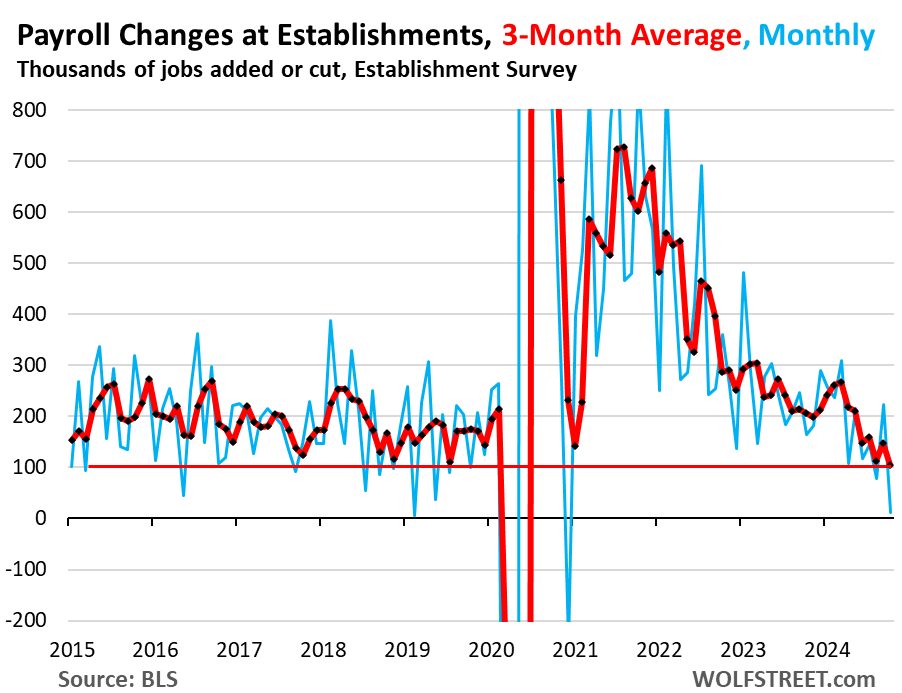
Average hourly earnings, based on what employers reported, jumped by 4.5% annualized in October from September (blue line).
The three-month average also jumped by 4.5% annualized, the biggest jump since January. It has been increasing steadily since April (red line).
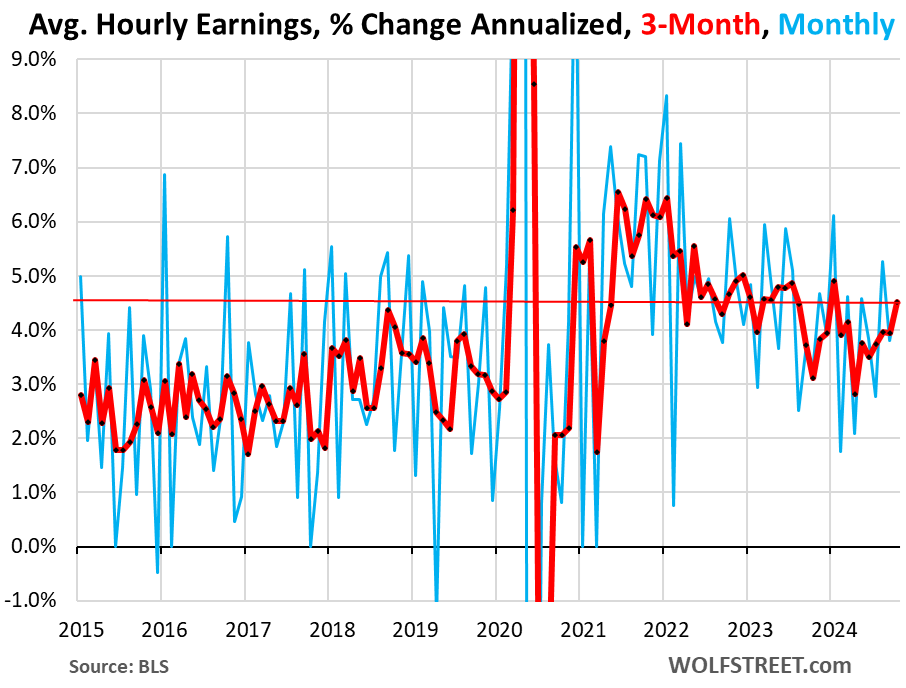
Year-over-year, average hourly earnings rose to 4.0% in October from September, the biggest year-over-year increase since May, the third month in a row of year-over-year increases, and well above the peaks of the 2017-2019 period.
So in terms of the reborn inflation worries, this accelerating wage growth is not going in the right direction.
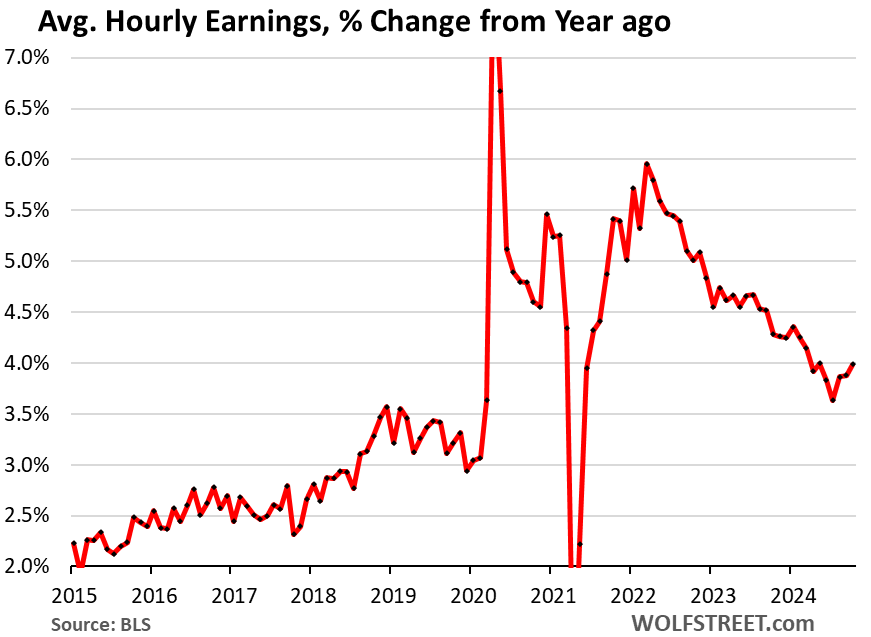
The headline unemployment rate (U-3), based on the household survey, remained at 4.1% in October. In July it had risen to 4.3% but has come down since then. This is a historically low rate, though it is up from the period of the labor shortages in 2022.
The unemployment rate is below the Fed’s 4.4% median projection for the end of 2024 and for the end of 2025, according to the Fed’s Summary of Economic Projections released at the rate-cut meeting.
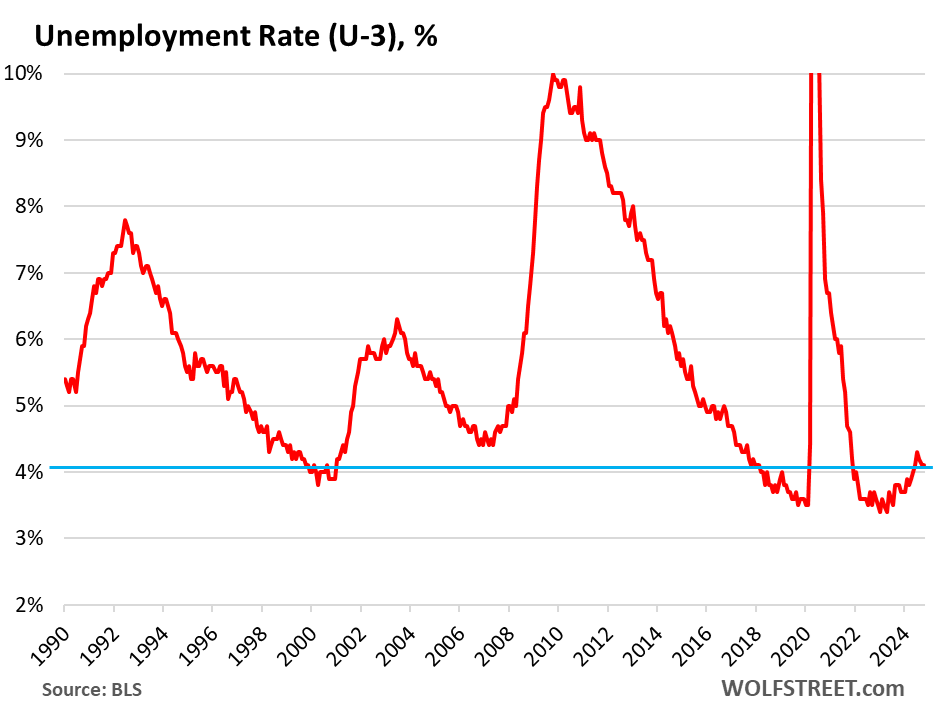
The influx of new immigrants – estimated by the Congressional Budget Office at 6 million in 2022 and 2023 and ongoing in 2024, see chart below – is hard to track in the household employment data because proportionately fewer of them respond to the household surveys.
The newly arrived immigrants who either already have a job or are looking for a job would count in the labor force, regardless of their legal status. If they’re working, they would count as such, regardless of legal status. Those that have not found a job yet would show up in the unemployment rate.
A rise of the unemployment rate due to this new supply of labor is a different dynamic than a rise of the unemployment rate due to job cuts and a reduction in demand for labor, as is typical in a recession.
This chart shows the sudden population growth driven by the huge waves of immigration in 2022 through 2024, according to the Congressional Budget Office, which used ICE data in addition to Census Bureau data:
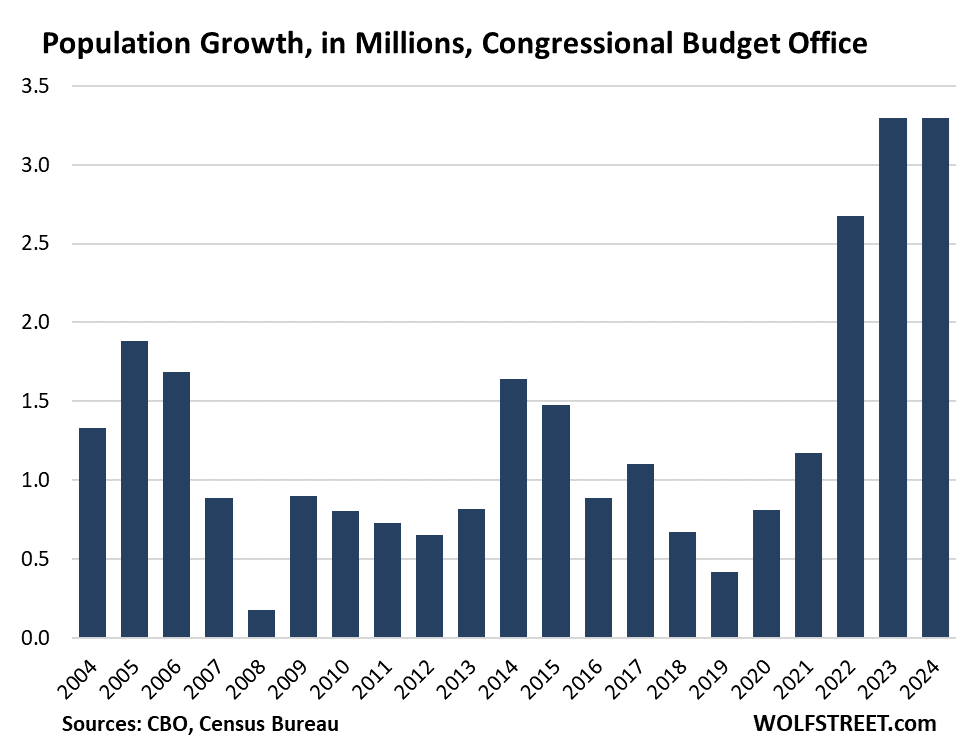
The number of unemployed people looking for a job rose to 6.98 million, after falling for two months in a row. The three-month average dipped to 6.98 million.
This metric of the number of unemployed does not take into account the growth of the labor force over the decades. But the unemployment rate (above) accounts for it.
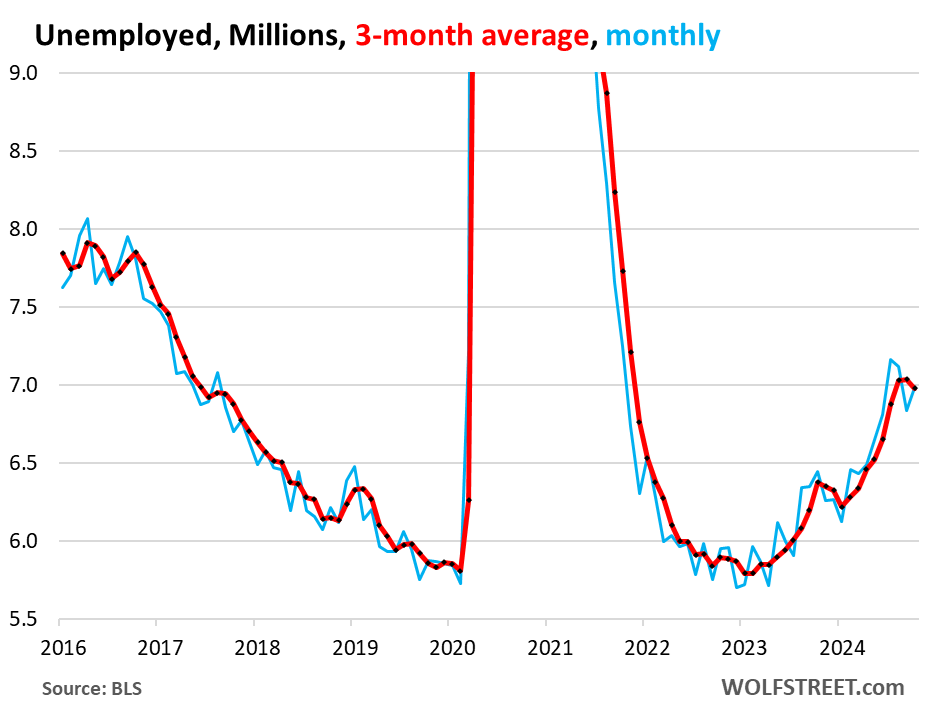
The bond market figured it out too.
The return to work of the Boeing employees with big pay increases in their new contracts will cause manufacturing employment to bounce back. And the after-effects of the hurricanes will include a jump in payrolls.
So over the next few months, there should be a sharp increase in nonfarm payrolls. And this comes on top of the already accelerating average hourly wages that are among the factors stirring up inflation worries.
So upon seeing all this unfold, the bond market puckered its lips. After initially dropping, the 10-year yield jumped and is now up by 6 basis points, to 4.35%, the highest yield since early July. Since the Fed’s rate cut, the 10-year Treasury yield has risen by 70 basis points.
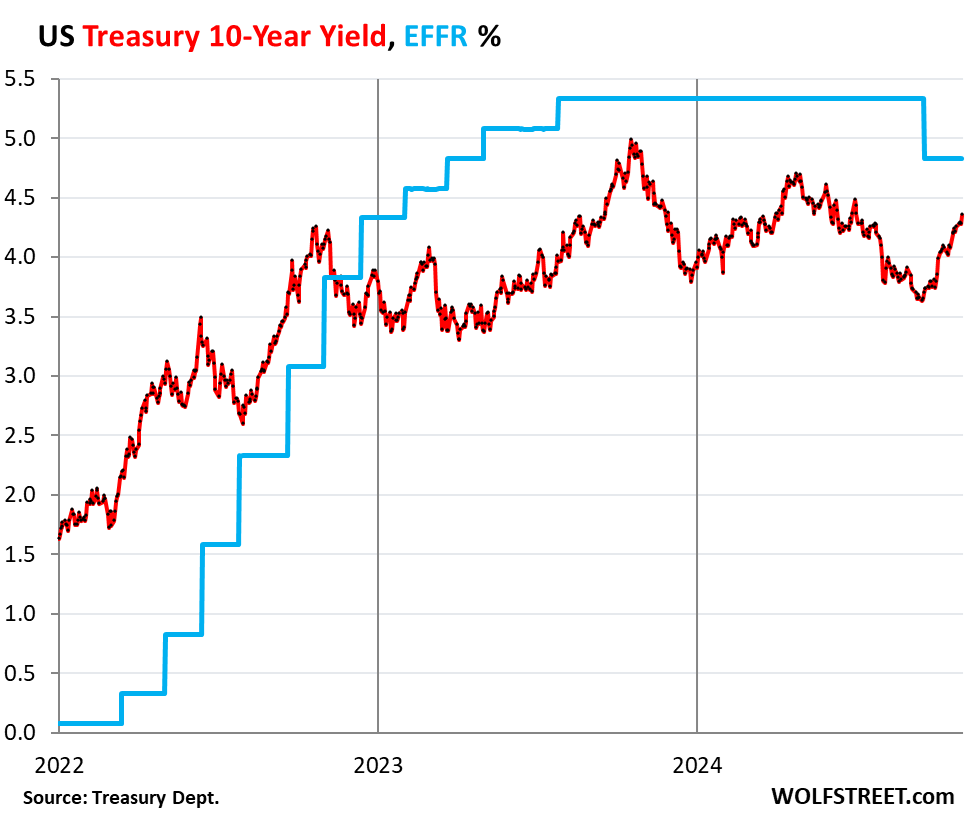
Enjoy reading WOLF STREET and want to support it? You can donate. I appreciate it immensely. Click on the beer and iced-tea mug to find out how:
Would you like to be notified via email when WOLF STREET publishes a new article? Sign up here.
![]()
The post Hurricanes Helene & Milton and the Boeing Strike Make Mess of Jobs Report. And Wages Surge appeared first on Energy News Beat.
Energy News Beat

